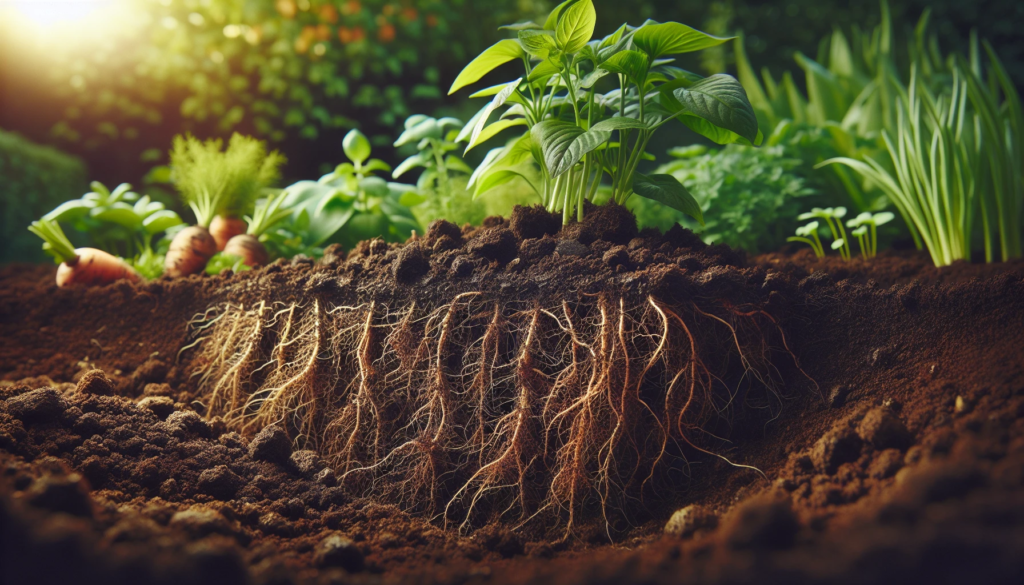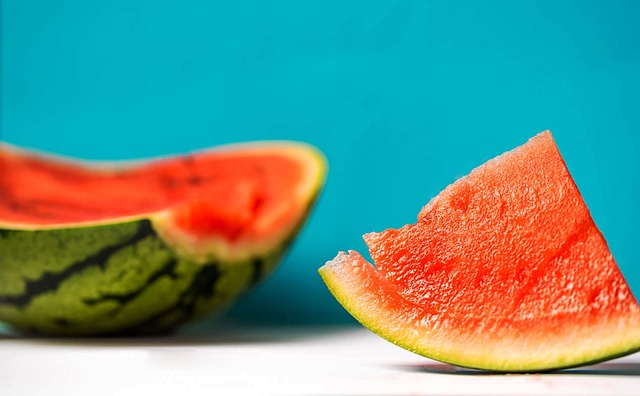Essential Survival Garden Seeds: Your Ultimate Guide to Sustainable Food… »
November 24, 2023

In the intricate world of orchard management, training fruit trees serves as the architectural foundation, ensuring resilient structures that support copious yields without the looming threat of limb breakage. This vital practice goes beyond cultivation, becoming the blueprint for a fruit tree’s fortitude.
In essence, training and pruning stand as keystones in orchard management, weaving a narrative of resilience, productivity, and quality. These deliberate interventions sculpt orchards that bear fruit and stand as testaments to the symbiotic dance between cultivation and nature’s artistry.
Training for Resilience and Early Productivity
Training unfolds as the horticultural maestro, orchestrating accelerated journeys to productivity for older trees and young saplings. Beyond fortifying a tree’s strength, training propels it into early production, unlocking its potential at the earliest age.
Pruning: Sculpting Efficiency and Strength
Complementary to training, pruning emerges as a sculptor, carefully reducing overall tree size for both aesthetic appeal and efficiency. In the formative years, tree pruning also becomes a strategic dance, enhancing structural strength and inducing branching, shaping a robust entity capable of withstanding the demands of fruitful existence.
Fine-Tuning for Mature Trees
For mature trees, pruning is an artistry that fine-tunes production and elevates fruit quality. It’s a nuanced instrument that reduces the need for artificial support, shaping the tree into a natural equilibrium and lessening the burden on its branches.

Essential Pruning Tools for Success:
1. Long-Handled Pruning Shears or Lopper: The Precision Maestro
Meet your precision maestro, the Long-Handled Pruning Shears. Our favorite is the Fiskars 28″ Lopper, which cutes up to 1.5″ branches. Crafted for the meticulous gardener, these shears offer an extended reach, allowing you to effortlessly access high branches and delicate areas. With razor-sharp blades, every cut is a surgical masterpiece, ensuring a clean, precise trim for optimal tree health and aesthetics.
Fiskars 28″ Steel Blade Garden Bypass Lopper
2. Hand Shears: Versatility at Your Fingertips
For the hands-on gardener seeking versatility, these Fiskar Hand Shears are your go-to companion. Perfect for intricate pruning tasks and shaping small branches, these shears provide the control and finesse needed for meticulous work. Lightweight and ergonomic, they effortlessly adapt to your movements, making them an indispensable tool for every pruning endeavor.
Fiskars 5/8″ Pruning Shears
3. Pruning Saw: Tackling the Tough Terrain
When faced with challenging branches and thicker limbs, enter the Pruning Saw—a robust force ready to conquer tough terrain. Engineered with sharp teeth and a durable frame, this saw effortlessly glides through dense wood, ensuring a swift and effective pruning experience. Say goodbye to struggle, and let the Pruning Saw transform your toughest tasks into seamless accomplishments.
Folding 8″ Pruning Saw
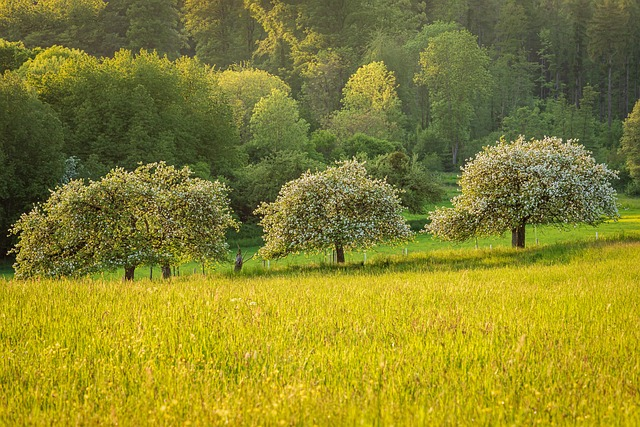
Training Fruit Trees: A Symphony of Strength and Productivity
Training fruit trees is an intricate art, a horticultural symphony that orchestrates the growth of orchard assets. In this endeavor, the benefits of training are multifaceted, offering a blueprint for strong structures, early productivity, and enhanced fruit quality.
Development of Strong Tree Structure
Training lays the groundwork for the creation of robust tree structures. Like a scaffolding for future growth, it ensures the tree can bear the weight of substantial harvests without succumbing to limb breakage. The emphasis here is on forging a solid foundation that will withstand the rigors of fruitful seasons.
Early Tree Production
One of the key dividends of training is the acceleration of a tree’s journey to productivity. By guiding the tree’s growth early on, training becomes a catalyst for bringing young trees into production at an impressively early age. It’s not merely about cultivating; it’s about unlocking the orchard’s potential right from its infancy.
Pruning in Training
Pruning, intertwined with training, is a delicate dance that involves strategic trimming for optimal results. This symbiotic relationship between training and pruning serves various purposes at different stages of a tree’s life.
Structural Strength Improvement in Young Trees
In the formative years, pruning takes on the role of a strength coach for young trees. It’s about strategic cuts that enhance structural integrity, fostering a healthy tree, that can withstand the trials of weather and bear the weight of future harvests with grace.
Increased Production and Improved Fruit Quality in Mature Trees
As trees mature, pruning becomes an artistry that fine-tunes production and elevates fruit quality. Selective trimming ensures all the fruit and energy is directed where it matters most, optimizing both quantity and flavor. It’s the delicate touch that transforms a mature tree into a prolific and quality fruit-bearer.
Reduction of Limb Support Needs
An often-overlooked benefit of pruning in training is the reduction in the need for artificial limb support. Carefully shaped trees find a natural equilibrium, lessening the burden on other branches, and mitigating the necessity for additional support structures. It’s a practical outcome of strategic pruning interventions.
Common Pruning and Training Terms
Understanding the language of pruning and training is akin to deciphering the orchard’s own lexicon. The following terms, form the foundation for effective communication in the world of orchard management.
Branch Collar: The raised tissue at the base of every branch, containing specialized cells that seal off pruning wounds from wood rot fungi.
Crotch Angle: The angle formed between the trunk and a limb, with the strongest crotch angle falling between 45 to 60 degrees.
Crown: The base of the trunk where the tree meets the soil, often considered the foundation of the tree’s stature natural form.
Heading (Head Cut): A pruning cut that removes only part of a branch, often executed to encourage branching and shape the tree.
Lateral Branch: A side shoot off of another branch, lateral branches are typically at a more horizontal angle, contributing to the tree’s overall structure.
Leader: The uppermost portion of a scaffold limb, crucial for central-leader trained trees where only one leader is left in the center of larger tree.
Scaffold Limb: A large limb forming a tree’s framework, contributing to the overall architecture of the orchard.
Shoot: The length of branch growth in one season, often marked by bud scale scars, indicating the start of a dormant season or a new season’s growth.
Spur: A short shoot that bears fruit, playing a role in the ultimate yield of the tree.
Stub: A short portion of a branch left after a pruning cut, to be avoided as it may invite wood rot fungi.
Sucker Sprout: A 1-year-old shoot that grows from the root, demanding attention to prevent unwanted growth.
Terminal: The end of any shoot, representing the furthest point of growth for that particular branch.
Thinning Cut: A pruning cut that removes an entire branch from its point of origin, promoting light penetration and fruitful spurs.
Vertical Branch: A branch that grows upright branches, with considerations for managing its growth to maintain overall tree size.
Water Sprout: A 1-year-old shoot that grows within the tree, necessitating a winter pruning to maintain an optimal tree structure.
In mastering these terms, orchardists unlock the language of successful training and pruning, enabling effective communication and application of these principles in the pursuit of orchard perfection.
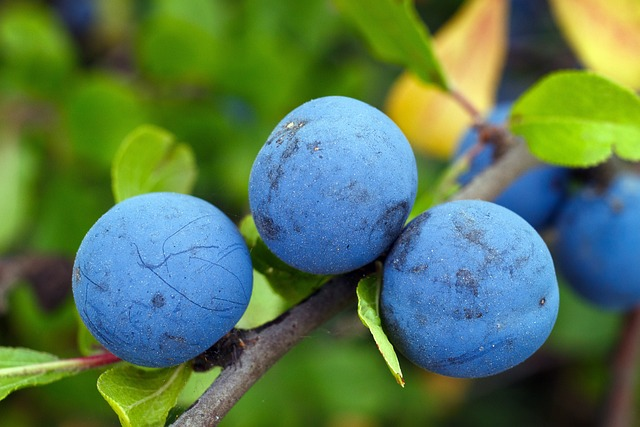
When to Prune: Crafting the Orchard Symphony
Pruning at Planting Time: Sowing the Seeds of Success
The very genesis of a well-pruned tree lies in the moments of its planting. Pruning fruit tree at planting time is not a mere task; it’s a strategic investment. It involves carefully balancing the tops with the roots, laying the foundation for a tree that will stand tall and robust in the face of future seasons. This initial pruning dance is a preemptive measure, ensuring that the young sapling is set on a trajectory of balanced growth from the very start.
Light Pruning for Young Trees: Nurturing Tender Growth
As our orchard companions transition from saplings to young trees, the pruning touch becomes more nuanced. Light pruning for young trees is the delicate art of shaping without constraining, encouraging new growth, without overwhelming. It’s about selective trimming, creating a framework that allows the tree to explore its potential while maintaining a structural elegance. In these formative years, each pruning decision is a gentle nudge towards a future of resilience and vitality.
Heavier Pruning for Mature Trees: Sculpting Experience into Excellence
Mature trees, having weathered the seasons, benefit from a more assertive pruning approach. Heavier pruning for mature trees is the sculptor’s intervention, fine-tuning the tree’s productivity and fruit quality. It involves strategic cuts, removing excess growth, and optimizing the distribution of energy. It’s a symphony conductor wielding the baton with purpose, orchestrating the tree’s resources for a performance of abundance.
Timing of Pruning: Nature’s Rhythm as a Guide
Understanding the rhythm of nature becomes paramount when considering the timing of pruning. Pruning, ideally, takes center stage in late winter when the danger of fall or early winter freeze has passed but before the full bloom of spring. Sweet cherry trees, with their unique characteristics, may find their pruning spotlight in August to mitigate the risk of bacterial infection. Timing, in the world of pruning, is a dance with seasons, ensuring that each cut aligns with the tree’s natural cadence.
Shoot Thinning in Mature Trees: Cultivating Quality Over Quantity
In the maturation process of trees, the focus shifts from sheer abundance to curated excellence. Shoot thinning in mature trees is the curator’s touch, selectively removing shoots that crowd the tree’s canopy. This intervention channels the tree’s resources, enhancing the size and quality of the remaining shoots. It’s a practice that transforms a bustling canopy into a curated collection, where each shoot contributes to the symphony of a bountiful harvest.
Height Reduction Techniques: Shaping Stature for Convenience
In the orchestration of an orchard, the height of a tree is not just a matter of verticality; it’s a strategic consideration. Height reduction techniques are the conductor’s directives for shaping trees to a manageable stature. Whether it involves cutting limbs at the top to a desired lateral branch height or employing methods like bending and securing limbs, the goal is clear—to create a tree that not only bears fruit but does so in a way that aligns with the practicalities of cultivation and harvest. It’s the art of shaping stature for both convenience and productivity.
Tree Training Systems: Orchestrating Growth with Precision
In the grand orchestration of orchard management, choosing the right training system is akin to selecting the musical score that will guide the symphony of a tree’s growth. Each system, from the open center to the intricate patterns of espalier training, plays a unique role in shaping the destiny of our leafy companions.
Open Center Training: Cultivating an Orchardscape
Open center training is the virtuoso’s performance in crafting an orchard landscape. The four-winter training process unfolds as a meticulous dance, shaping the tree’s framework with deliberate precision. In the first winter, three or four shoots are chosen to form main scaffold branches, creating the foundational structure. As the seasons progress, additional shoots are incorporated, and by the fourth winter, the orchard reveals a harmonious open center. The spacing and selection of remaining scaffold branches and limbs contribute to a robust tree structure, fostering an orchardscape of strength and resilience.
Central-Leader Training: Elevating Leadership in Growth
Central-leader training emerges as a leadership program for trees, with the first winter setting the stage for a tree’s ascent. A vigorous shoot, chosen near the tree’s center, becomes the leader, guiding the entire tree top’s growth trajectory. Shoot growth, selection and training become a nuanced process, ensuring that no side branches become overly vigorous, competing for the central leader’s prominence. This method creates a hierarchy in the tree’s architecture, promoting a strong central leader that directs the overall growth. In the dance of seasons, careful pruning and limb spreading maintain this leadership dynamic, sculpting a tree that stands tall and commands its own growth narrative.
Modified Central-Leader Training: Shaping Evolution in Leadership
As trees mature, their leadership style may evolve. Modified central-leader training marks a transition from a singular leader to a more democratic, multiple-leader system. After choosing and establishing main scaffold branches, the central leader is gracefully retired in the third or fourth year of growth. The tree now enters a phase of training to a multiple-leader system, where several leaders coexist harmoniously. This system offers a dynamic approach, allowing for a diversity of leaders that contribute to the tree’s overall strength and resilience.
Espalier Training: Sculpting Trees in Two Dimensions
Espalier training is the artistic flourish in the orchard, where trees transcend the conventional three-dimensional form. This technique embraces a two-dimensional approach to tree development, creating a living tapestry against walls or trellises. Post and wire trellis implementation becomes the canvas on which dwarf apple and pear trees can, for instance, paint their portrait. The choice of posts, wire gauge, and proper attachment techniques become critical strokes in this artistic endeavor. Specific patterns like palmette add an extra layer of sophistication, shaping the trees into living sculptures that are not just productive but also aesthetically pleasing. Espalier training is an ode to the marriage of functionality and artistic expression in the orchard. It’s a way of sculpting trees that transcends the ordinary, turning each apple tree itself into a masterpiece in the symphony of orchard aesthetics.
Pruning Techniques: Nurturing Trees with Precision
In the delicate dance of orchard care, pruning techniques emerge as the maestro, guiding the growth and health of our fruit-bearing companions. Let’s delve into the art and science of proper pruning, uncovering the secrets to preserving branch health and ensuring the vitality of our orchards.
Proper Pruning Techniques: Crafting with Care
Preservation of Branch Collar
Preserving the branch collar is akin to safeguarding a tree’s natural defense mechanism. The raised tissue at the base of every branch, the branch collar, boasts specialized cells that seal off pruning wounds from the encroaching threat of wood rot fungi. It’s a meticulous process, ensuring the tree’s protective shield remains intact, fostering a robust defense against potential infections.
Avoidance of Wound Dressings
In the realm of pruning wisdom, there’s a discerning choice to avoid the allure of wound dressings. While the instinct may be to dress wounds, evidence suggests that these concoctions don’t necessarily reduce wood rots in pruning wounds. Instead, our focus should shift to early fruit tree pruning training, steering clear of large pruning wounds low in the fruit tree itself—a proactive approach to preempt potential infections.
Pruning to Prevent Large Wounds
Size matters in the world of pruning trees’ wounds. The mantra is clear: to prune trees with precision, preventing the creation of unnecessarily large wounds. This delicate balance ensures that each cut is purposeful, not only preserving the tree’s natural aesthetics but also minimizing the risk of wood rot fungi. The art of pruning becomes a dance of finesse, where each cut is a brushstroke in the canvas of tree care.
General Rules for Training: Orchestrating Growth with Finesse
Training at Planting Time
The journey to a well-trained tree begins at its very inception. Training at planting time sets the trajectory for a tree’s future growth. It’s a foundational investment, a commitment to shaping the tree’s formative years. This early intervention paves the way for a strong structure, positioning the newly planted tree for a lifetime of fruitful abundance.
Summer Shoot Removal
In the summer symphony of growth, a key refrain is the removal of unwanted shoots. Precision is paramount, as small, unwanted shoots are nipped in the bud during their nascent stage. This selective pruning not only channels the tree’s energy more efficiently but also contributes to a cleaner, more manageable canopy. It’s a strategic move in the ongoing dialogue between caretaker and tree.
Emphasis on Limb Positioning
The emphasis shifts from mere pruning to strategic limb positioning—a nuanced approach to tree training. The art lies not only in what is pruned but in how the limbs are positioned. Limbs are coaxed into ideal locations, fostering a tree structure that can bear the weight of bountiful harvests each growing season without the crutch of additional support. It’s the orchestration of tree growth itself, where each limb finds its place in the symphony of the orchard.
In mastering these pruning techniques and general rules for training, orchardists become custodians of a thriving ecosystem, where each cut and positioning decision contributes to the flourishing narrative of our fruit-laden companions.
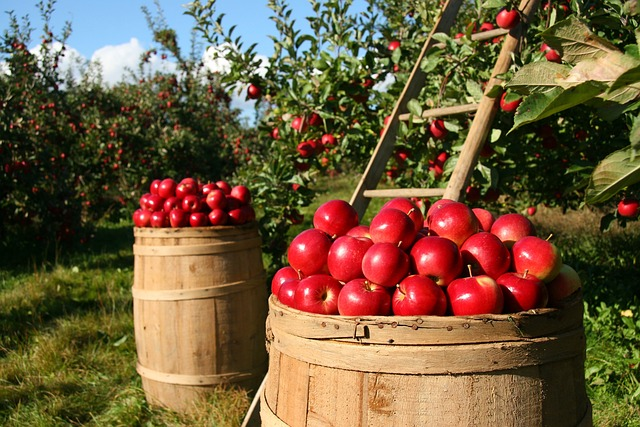
Management of Fruit Trees: Orchestrating Growth with Precision
In the world of orchard management, ensuring the well-being of our fruit-bearing companions involves strategic maneuvers to control their height and address the considerations unique to homeowners.
Height Control Strategies: Navigating the Vertical Symphony
Height control is not just about aesthetics; it’s a strategic move in the orchard’s symphony. Employing dwarfing rootstocks is akin to choosing a conductor for a specific musical piece. These specialized rootstocks, tailored for limited growth, dictate the tree’s stature, ensuring it stays compact and manageable. Pruning, the sculptor’s touch, becomes another avenue for height control. Strategic pruning cuts and shaping techniques guide the tree’s growth, creating a harmonious balance between verticality and practicality. Trellis systems, with their structured elegance, add a layer of sophistication to height management, allowing for a controlled ascent that aligns with the orchard’s overall design.
Considerations for Homeowners: Tending to Domestic Orchards
Homeowners, with their unique orchard scenarios, find themselves at the crossroads of inherited trees, untended risks, and the spectrum of replacement options.
Inherited Fruit Trees: Nurturing a Legacy
The presence of inherited fruit trees on a property carries a legacy that intertwines with the homeowner’s journey. Do you manage them or replace them? It’s a question that echoes through the orchard corridors. The decision becomes a balance between preserving a legacy and aligning the orchard with contemporary needs. It involves understanding the varieties, rootstocks, and training systems inherited and deciding whether to nurture the existing legacy or usher in a new era of fruit-bearing possibilities.
Untended Tree Risks: Navigating the Wild Orchards
Untended fruit trees, left to their own devices, can morph from serene orchard companions to potential troublemakers. These untamed entities not only compromise their own health but also become hotspots for pests and diseases that can wreak havoc in the orchard ecosystem. For commercial growers, these untended trees pose a risk, making pest control a challenging endeavor. Homeowners, in the pursuit of shade or aesthetics, might unwittingly be fostering a haven for pests. The decision to prune, manage, or replace untended trees becomes a strategic move in maintaining a healthy orchard environment.
Replacement Options: Cultivating Future Harvests
The canvas of orchard management allows homeowners the artistic freedom to choose replacement options that align with their vision. Do you opt for different varieties, alternative rootstocks, or perhaps embrace a new training system? Replacement becomes an opportunity for innovation and rejuvenation. It’s the chance to shape the orchard in line with contemporary goals, whether that be optimizing space, enhancing aesthetics, or prioritizing specific fruit varieties. Each replacement option is a brushstroke on the canvas of the orchard’s evolution, cultivating the promise of future harvests while honoring the orchard’s storied past.

Fruiting Habits: Unraveling Nature’s Culinary Symphony
Overview of Fruiting Habits: The Dance of Seasons in Orchards
Fruiting habits of trees are a mesmerizing dance, a rhythmic sequence dictated by nature’s choreography. Whether it’s the succulent, peach tree or the crisp apple, each tree has its unique steps in this arboreal ballet. Understanding these habits is like deciphering the language of orchard seasons, where each stage contributes to the grand finale of a bountiful harvest.
Comparison of Peach and Apple Fruiting Habits: A Tale of Two Orchards
Peaches and apples, though both stalwarts in the orchard, perform distinctly different routines when it comes to fruiting. The comparison is like contrasting two dance styles, each with its own grace and rhythm. Peaches, the prima donnas of the orchard, bloom exclusively on the previous summer’s 1-year-old wood. Apples, on the other hand, showcase their prowess on spurs or shoots emerging from 2-year-old wood. It’s a fascinating interplay of growth and fruition, where the trees follow their unique scripts in the grand narrative of orchard life.
Impact of Light Exposure on Spurs: Illuminating the Path to Productivity
In the intricate ballet of orchard life, light plays the role of the spotlight, influencing the performance of the fruit spurs themselves, the virtuosos of fruit production. Spurs, those specialized shoots that bear the fruit crop, crave the limelight for their starring role. Thinning cuts, akin to opening the curtains on a theatrical stage, become pivotal. These cuts allow light to penetrate the tree canopy, ensuring that spurs receive their fair share of illumination. The impact is profound – a well-lit stage ensures fruitful performances, enhancing the overall quality and quantity of the harvest. It’s a delicate interplay of nature and nurture, where the spotlight becomes a catalyst for a symphony of flavors in the orchard’s culinary repertoire.
Conclusion:
In mastering the art of pruning, orchard enthusiasts not only optimize the health and productivity of their fruit trees but also mitigate the risks associated with neglect. From the careful removal of deadwood to shaping the tree for optimal growth, each step plays a crucial role in ensuring a robust and fruitful harvest. Embrace the art of pruning, and witness your orchard flourish with vitality and resilience. Happy summer pruning!
The information on this website has been summarized from Oregon State University’s PNW Publication.




